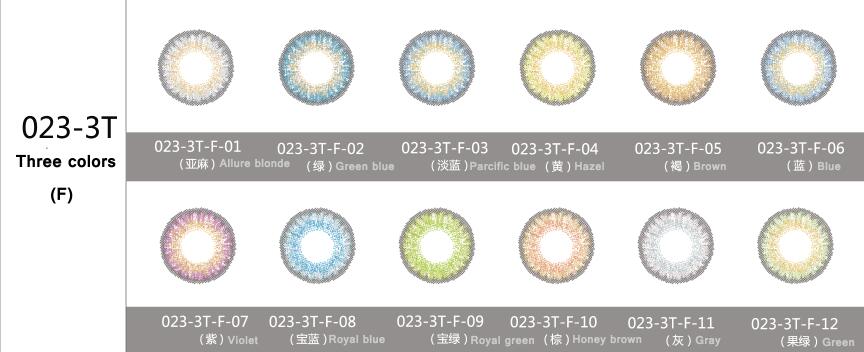Contact Lenses
Contact lenses, also known as contact lenses, are lenses that are worn on the cornea of the eye to correct vision or protect the eyes. According to the hardness of the material, it includes three types: rigid, semi-rigid and soft. Contact lenses not only bring great improvement to patients with myopia, hyperopia, astigmatism and other refractive errors in terms of appearance and convenience. In addition, it has a wide field of vision and realistic vision. In addition, it has also played a special role in controlling the development of myopia and astigmatism in teenagers and treating special eye diseases.
Material
Silicone hydrogels, hydrated polymers (methyl methacrylate, hydroxyethyl methacrylate, glyceryl methacrylate, etc.).
Center thickness
Generally speaking, the center thickness of the low water content lens is relatively thin, and the center thickness of the high water content lens will be designed to be thicker.
Oxygen permeability coefficient
It is related to lens material, lens water content and lens design.
Diameter
13.5mm-14.5mm (This is the most common diameter range of contact lenses. Some brands of colored contact lenses may have a diameter that exceeds this range for aesthetics, but they should be properly used in consideration of practical use.)
Optical zone
It refers to the central area of the lens through which the external light enters the pupil, and the refractive power of the lens is affected by this part.
Lens color
Generally clear lenses are light blue, and there are also colorless or colored contact lenses.
Base arc
Generally, the base arc of the soft lens should be 0.6-0.8mm larger than the curvature of the anterior surface of the cornea.
Water content
The level of water content will affect the characteristics of the lens. The higher the water content, the softer the lens is, but it is also easier to deform and break, and the lens is more likely to lose water; on the contrary, the lower the water content, the better the lens formability, the less deformation, and the less likely to be dehydrated than the high water content lens. Case. The level of water content is generally divided as follows:
That is, if the water content is less than 38%, it is called a low water content lens, 42%-60% is a medium water content lens, and more than 60% is a high water content lens.
Oxygen permeability
For friends who wear contact lenses or colored contact lenses for the first time, they will feel uncomfortable. One of the possible reasons is because of corneal hypoxia. Under normal circumstances, our cornea needs to "breathe". The oxygen permeability of contact lenses is an important indicator for evaluating the quality of contact lens materials. Therefore, a lens material with a high oxygen permeability is an important factor in choosing lenses.
Long-term hypoxia of the cornea can easily lead to corneal-related complications, such as chronic corneal edema, corneal neovascularization, etc. Contact lenses, especially colored contact lenses, meet the needs of the majority of beauty lovers, but they must be fitted according to standard procedures. Contact lens products, and strictly follow the care routine for daily care. It should be noted that the oxygen permeability of lenses of different materials, such as ordinary hydrogel lenses and silicone hydrogel lenses, is very different, and the wearable time is also very different.

Thanks for reading
Sophie Yang
004@mikeeyewear.com

